Vidac 336 Analog Computer by Computing Techniques
Having been involved with computing since the 1980's there isn't much I see that now catches my attention. In 2016 a computer for sale on EBay caught my eye as I had never heard of it before. A Vidac 336 by Computing Techniques Limited. This may not look like today's computers and as such the current generations may not even recognise it as being a computer.
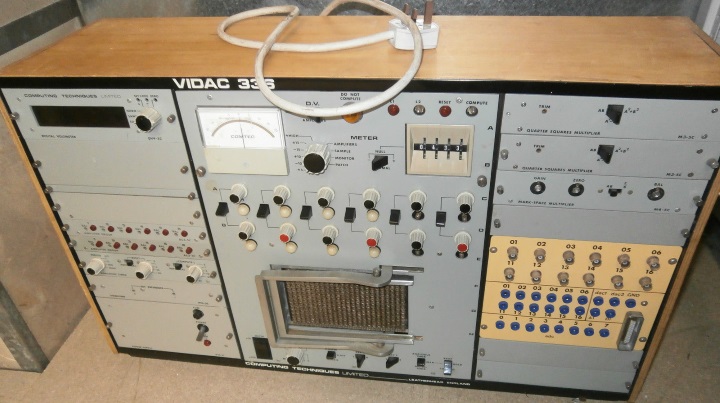
In 1991 Mark Weiser envisioned ubiquitous computing, computing embedded into everyday life to such an extent that it was entirely natural and transparent to use (The Computer for the 21st Century, Scientific America, September 1991). As we walk around glued to our smartphones, interacting with a world driven by networked computers and using multiple computer-based devices at home and work that vision is a reality. The smartphone in your pocket is essentially the same as any other digital computer, which exploded out of the research and development of World War II. Yet digital computers (based on binary logic) followed in the footsteps of analog computation (based on linear voltage and current values), and for sometime analog computers ran alongside their digital upstarts. The Vidac 336 is such an analog computer. (BTW, Brits spell analog as analogue, but this article is aimed at a worldwide audience.)
By the time Mark Wesier wrote his article the analog computer had already faded away into relative obscurity. I did a short course on analog computation as part of a degree course in the early 1980s but it was only for background knowledge. Analog computation was were still being used for process control but was being replaced by digital-based control as industrial plant was updated.
The knobs, sockets and patch panel all identify the Vidac 336 as an analog machine. I went digging into the interweb to find more information, unfortunately, there is little available. Computing Techniques Limited was formed in the early seventies but only lasted about ten years. The winding-up notice appeared in The London Gazette on 14th September 1983 (12067).
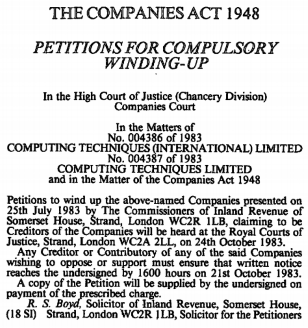
I asked Prof Dr Bernd Ulmann of the Analog Museum if he had any information. He states that it was missing a patch panel and probably needs some repairs. He said that:
"There were quite a lot of applications for analog computers in medicine. I know of practical examples in the areas of radiology (planning radiation doses in an analog 3d model which required rather large analog computers due to the partial DEQs involved), smoothing of measurement data (EEG, ECG etc.), motor control studies, studies in neurology and the like."
The Vidac computers do appear in some of the academic literature, for example, Specification for the Microprocessor Control of Pressure Within a Pilot Distillation Column (J.B. Edwards, Dept.of Control Engineering, University of Sheffield, 1980). This paper suggests that the Vidac supported digital and analog computation, and looking at the front it does appear to support the slotting of different modules. It is interesting to note that a few papers from the University of Sheffield feature a Vidac 336. The old Vidac 336 offered for sale was from a Yorkshire based IT recycling company. Could it have been the Vidac 336 from the University of Sheffield?
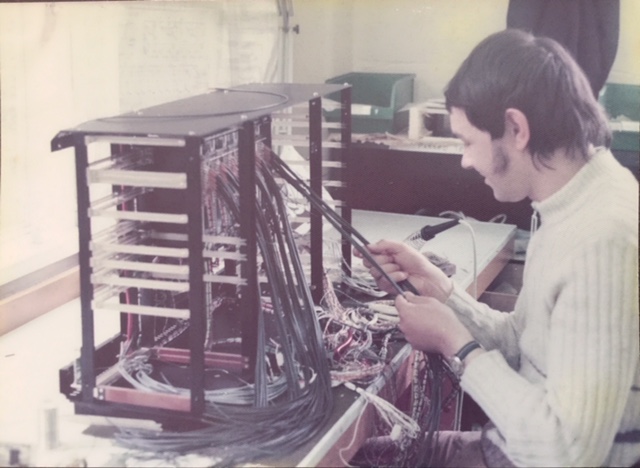
Former Computing Techniques employee Peter Hyde wiring a Vidac chassis in the 1970s
The Ebay asking price for what is in essence now a historical curiosity was very high at £2000. These types of computers are not worth much as only dedicated enthusiasts and museums have a use for them. For a vintage computer to command a high price it needs to be a seminal piece, rarity is not a guarantee of high value due to the specialised knowledge required (and physical space for the larger older machines). I'll finish off with a couple of pictures of the rear connections:
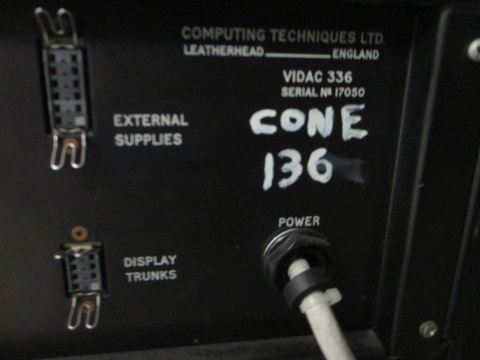
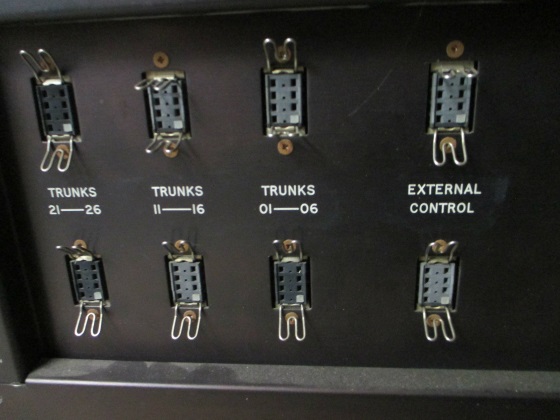
See Also
- There is a later article with more information on Computing Techniques and Vidac Analog Computers.
- View the Tek Eye full Index for other articles.
Author:Daniel S. Fowler Published: Updated:







